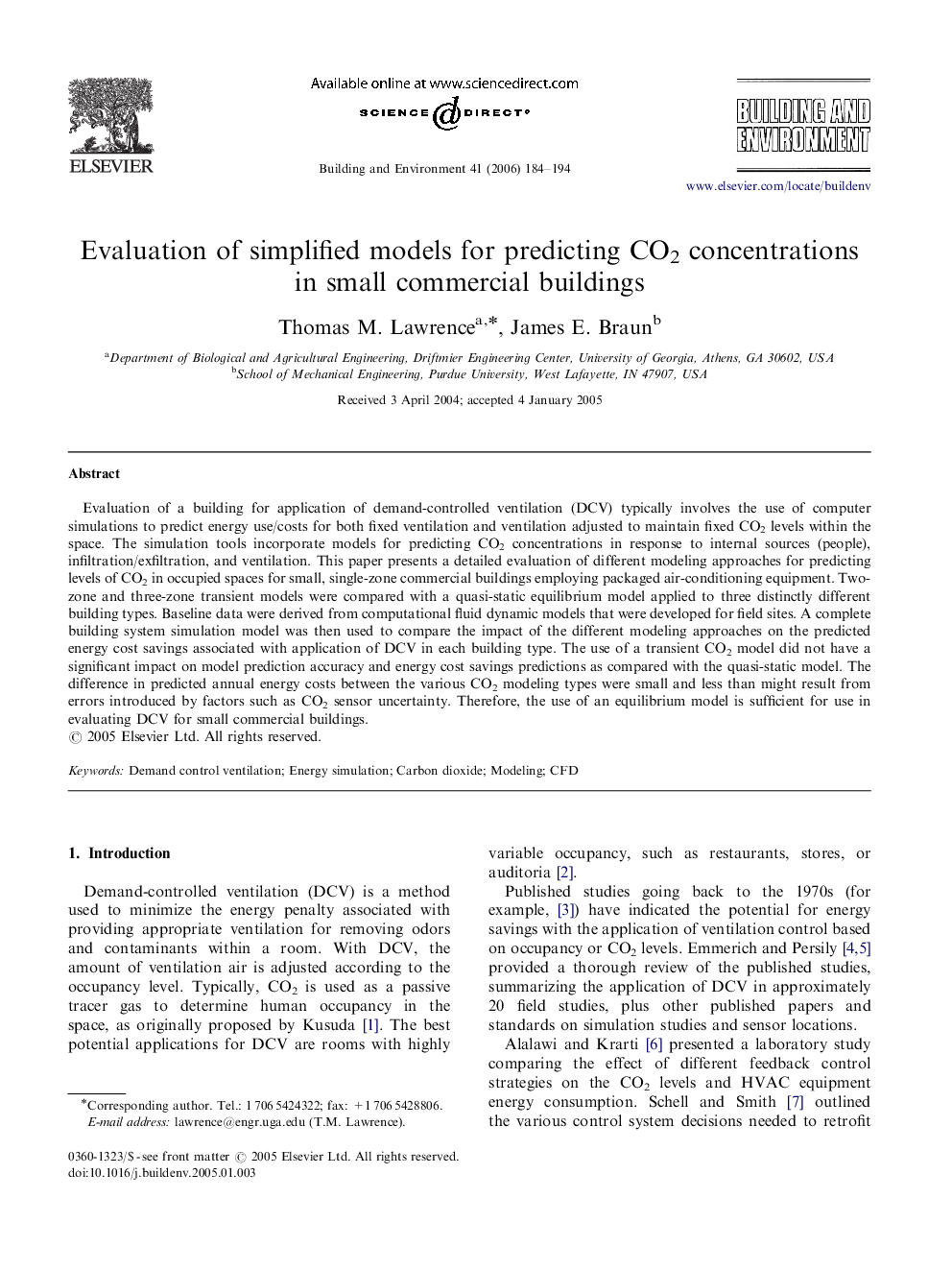| کد مقاله | کد نشریه | سال انتشار | مقاله انگلیسی | نسخه تمام متن |
|---|---|---|---|---|
| 250447 | 502671 | 2006 | 11 صفحه PDF | دانلود رایگان |

Evaluation of a building for application of demand-controlled ventilation (DCV) typically involves the use of computer simulations to predict energy use/costs for both fixed ventilation and ventilation adjusted to maintain fixed CO2 levels within the space. The simulation tools incorporate models for predicting CO2 concentrations in response to internal sources (people), infiltration/exfiltration, and ventilation. This paper presents a detailed evaluation of different modeling approaches for predicting levels of CO2 in occupied spaces for small, single-zone commercial buildings employing packaged air-conditioning equipment. Two-zone and three-zone transient models were compared with a quasi-static equilibrium model applied to three distinctly different building types. Baseline data were derived from computational fluid dynamic models that were developed for field sites. A complete building system simulation model was then used to compare the impact of the different modeling approaches on the predicted energy cost savings associated with application of DCV in each building type. The use of a transient CO2 model did not have a significant impact on model prediction accuracy and energy cost savings predictions as compared with the quasi-static model. The difference in predicted annual energy costs between the various CO2 modeling types were small and less than might result from errors introduced by factors such as CO2 sensor uncertainty. Therefore, the use of an equilibrium model is sufficient for use in evaluating DCV for small commercial buildings.
Journal: Building and Environment - Volume 41, Issue 2, February 2006, Pages 184–194